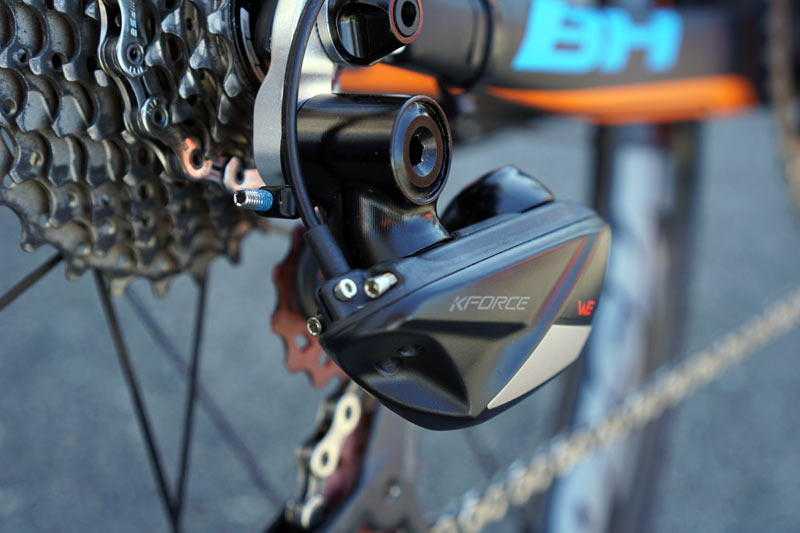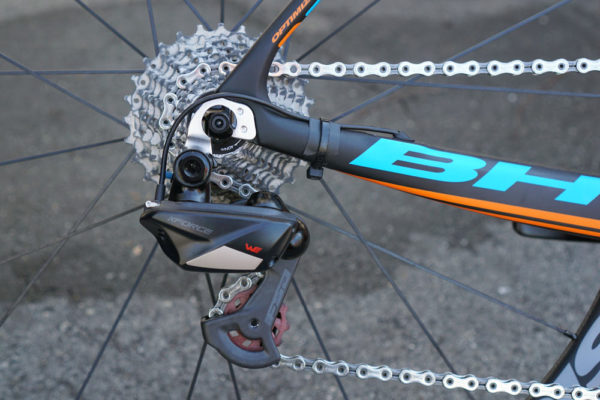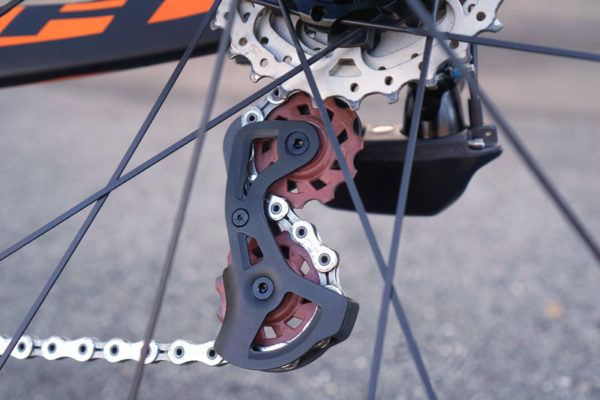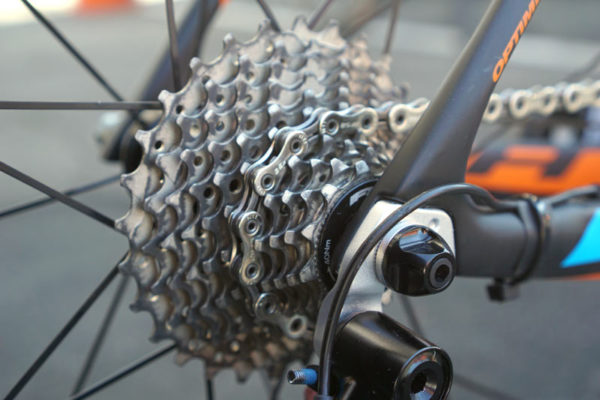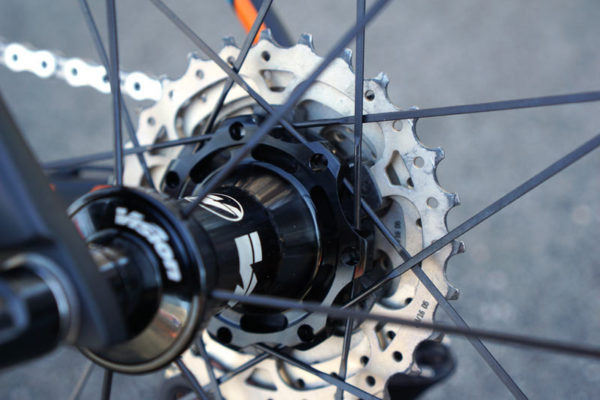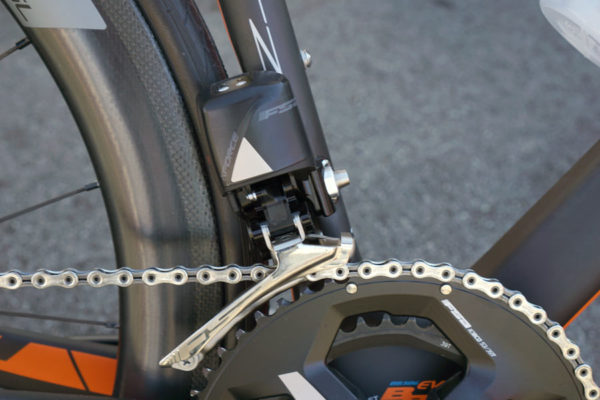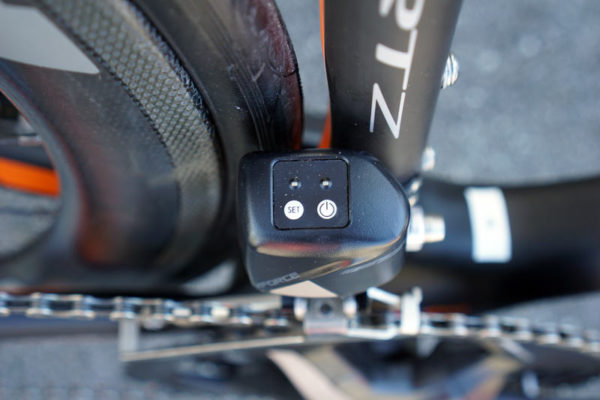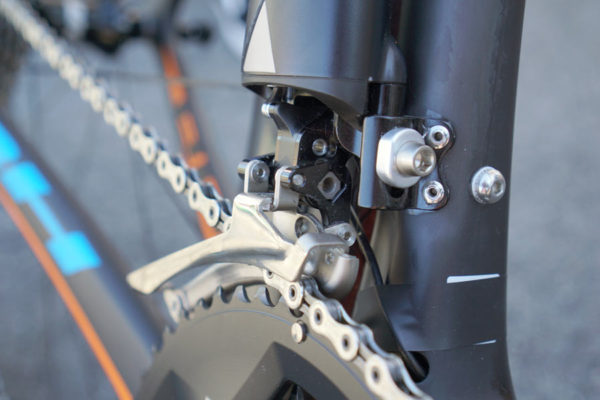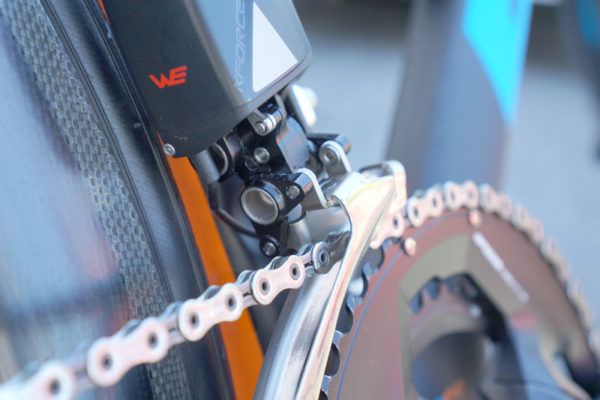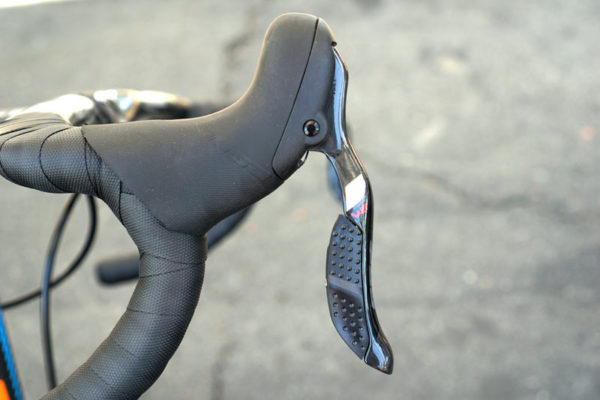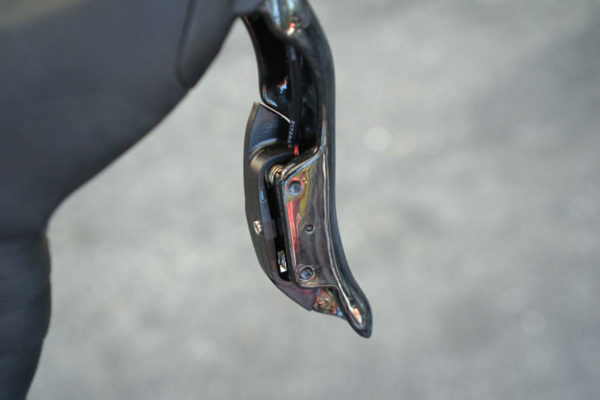Teased and spied for sooooo long, the FSA WE electronic group will finally see pro peloton action this year under Cofidis, Direct Energie and Jelly Belly. And possibly you – it goes on sale this spring. A firm on-sale date isn’t set yet, nor is pricing, but FSA has told us it’s coming soon. And they let us ride it.
The video above provides an overview of my first ride on the group, but now that I’ve had some time to digest the experience, there’s a bit more insight accompanying the photos below…
Overall, I’m impressed with WE after one ride. The shifting is smooth in the rear, if a little loud when shifted under power. But under normal “just cruising along” riding, it’s as quiet as any other group. Considering FSA hasn’t been in the cassette and complete drivetrain business for as long as SRAM, Shimano or Campagnolo, this is laudable. My bet is it’ll only get better.
The speed of shifts was something I’d like to see increased. The reaction between pressing the button and it shifting was nearly instant, but the speed of the shift and the speed at which you can immediately execute a second shift was just a hair slow. This can be adjusted through the app, so we’ll need to fiddle with it once we get a full group in for review to make a final call. FSA’s tech rep said you can adjust the speed to under a second (I’ve requested a firm number and will update the post as necessary), which sounds pretty quick. The trick, of course, is that the chain has to be able to settle on the cassette, so it can’t be too quick.
The front shifts were powerful enough to move it between chainrings even when standing on a climb or during a light sprint. The trim feature seems to need to complete itself before you’re able to shift it back to the other ring. In reality, that’s not something you’re likely to care about on the road, it just means you can’t throw it back and forth between the rings super quick in the work stand.
On top of the front derailleur are two different lights. One blinks a set of colors to indicate shifter battery level (each shifter gets its own coin cell battery), and another light blinks a different color pattern to indicate system battery level for the seatpost battery that powers the derailleurs.
The only combination that had any chain rub was being completely cross chained from big chainring-to-big cog. Other than that, the auto trim feature worked flawlessly. These were the same pre-production demo units they had at Interbike, so they’ve seen plenty of use, and they’re still working great.
While the battery is hidden inside the frame and runs one wire to each of the derailleurs (so, two wires total…I misspoke in the video), the brains of the unit are in the front derailleur. Which means, for now, you need to run the complete system. FSA’s Mike Lawless explains:
“As of right now since the brain in the FD communicates the shift to the RD you’d need to have both. Not 1x compatible but that option is something we’re definitely exploring in the near future. All efforts are going into a spring release of this version, and more variations will follow.”
Shifts are performed by pressing the top or bottom half of a rocker switch on the side of the brake lever. The springs are very light, possibly a little too light. I tend to ride with my two top fingers resting alongside the brake lever and, occasionally, they’d trigger a shift when I hit a bump. It didn’t happen often, but it could certainly happen at an inopportune time if you’re manhandling the bike during a sprint or changing positions to start a climb. And it might make it a tough choice for gravel or cyclocross as is.
My hunch is a firmer spring behind the buttons could resolve much of this, or simply recessing the rocker switch slightly behind the outside edge of the brake lever. The upside is that it’s super easy to trigger a shift, you barely need to touch it. And the function as it comes out of the box was very intuitive for me…up goes bigger, down goes smaller. Only if I tried to overthink it did I get bogged up. But the beauty of the system is that you can change the button function through their app to set it up however you want.
Ergonomics were spot on for me. Braking was easy from my normal hand position atop the hoods.
The WE group has been in development for a long time, and it shows. Now that it’s at a point where they can get pro mileage and race usage out of it, it’s sure to see year over year iterations for a bit, but it’s starting from a good place.
For the full tech story and tons more detail, check our launch coverage here.
